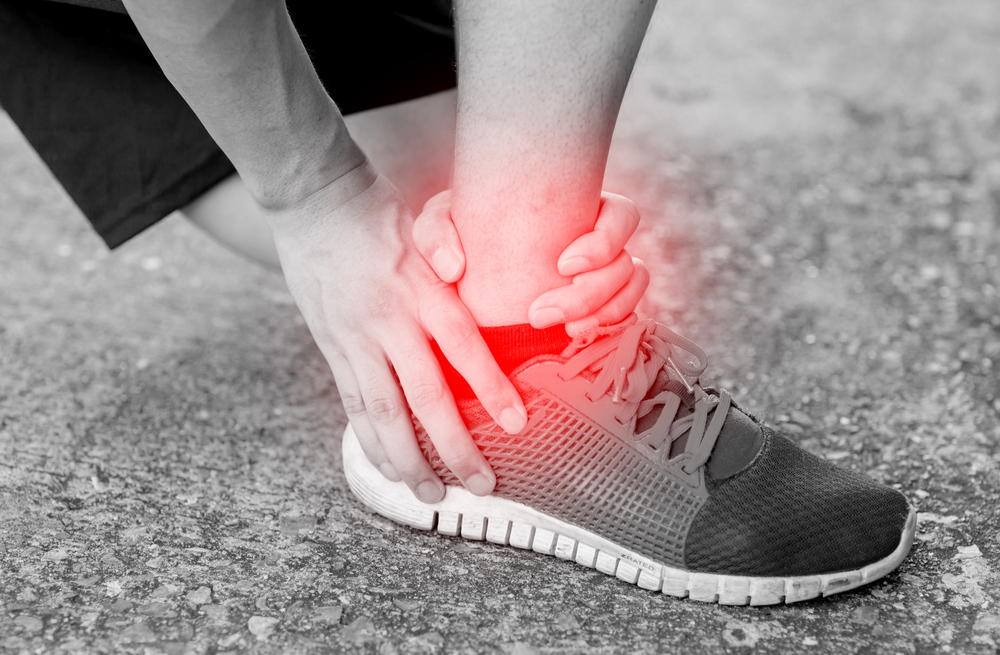Basketball season is here! I love watching basketball but unfortunately, many injuries occur with basketball players. The most common basketball injury is the ankle sprain. When I was in high school, ankle sprains were treated with the common acronym R.I.C.E., which stands for Rest, Ice, Compression, Elevation. Frequently, athletes were instructed to use crutches to stay off the sprained ankle. Athletes were told to use a brace, wrap, or even a boot to immobilize the ankle. However, this old advice is wrong and perhaps even counterproductive. Today, we are advising patients much differently. We encourage the player to move soon after the injury and to use simple physical medicine tools for a fast recovery. We will explain more on this later, but first, here is a quick anatomy lesson.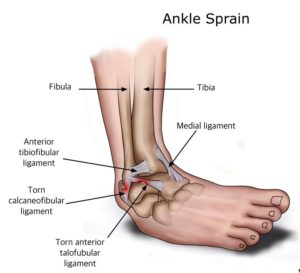
The most common mechanism of ankle sprain is an inversion motion. This puts a ton of stress on the lateral (outside) ligaments and muscles of the foot and ankle. We have 26 bones and 52 joints all joined with multiple tendons and ligaments. With this much ‘stuff’ in the area, it can be difficult to identify what exactly generates the pain. We can utilize our knowledge of anatomy along with some very specific tests to determine exactly what is injured and to what extent. A hands-on exam mixed with the patient’s recall of the injury will determine whether conservative care is the right call or if imaging is necessary to proceed with care.
Should it be x-rayed?
It is very rare that imaging is warranted in non-traumatic ankle injuries. In most cases, the most specific piece of information that leads us to order imaging is if the patient felt a distinctive ‘pop’ during the accident. This usually indicates a significant sprain of the ligament. However, sometimes the patient feels a pop, gets an MRI, and it comes back with a very minor sprain and no torn ligaments or fractures. These cases respond extremely well to conservative care and are usually back to full function in a few weeks. Ideally, we will see the patient as soon as possible following the injury so we can assess it and determine the specific course of action. The first several days following the onset of injury are crucial for speeding up recovery and ensuring no further damage is caused.
Movement > R.I.C.E.
In the absence of torn ligaments and fractures, movement is the best course of action for recovery of ankle sprains. For these patients, we do not recommend casting or booting and want them to weight bear and start moving as quickly as possible. Movement keeps these joints and tissues fed by pumping fluid in and out of the area. Bracing and rest can keep the inflammatory fluid static and the tissues recover more slowly. This delicate balance is what makes a swift recovery from an ankle sprain difficult and why you should seek professional help to get you back to normal quickly.
We recommend for injured patients to move in directions that do not recreate pain and to use exercises that produce controlled ankle movement. This wall lunge video shows one of my favorite exercises for ankle sprains.
Dry Needling/Acupuncture
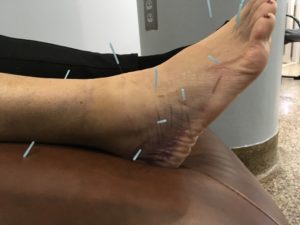 During the initial inflammatory phase of the injury, we employ our passive modalities such as dry needling and acupuncture to encourage blood flow into the injured region. Acupuncture also helps to reduce pain and help the patient to return back to work or sport swiftly.
During the initial inflammatory phase of the injury, we employ our passive modalities such as dry needling and acupuncture to encourage blood flow into the injured region. Acupuncture also helps to reduce pain and help the patient to return back to work or sport swiftly.
My favorite acupuncture success story was a few years ago when a gentleman told me about an accident he had when he fell off of his standing lawn mower. He said the fall did not create much pain but he was left wondering why his boot was on backwards. Unfortunately, the boot was not on backwards, but his foot was. The ankle dislocation was reset at the hospital and amazingly, he did not tear any ligaments. Of course, the ankle was very badly sprained and it swelled an excessive amount. Ten days after the accident, he limped into the office hoping that acupuncture could help. We needled the foot and ankle and he left walking out with only a little pain 20 minutes later. The next day he returned to work, grateful for the acupuncture.
Rehabilitation of an ankle sprain
The rehab of an ankle sprain is very important, but not very difficult. The most important retraining is not of the ankle but of the nervous system. After an ankle sprain, the brain blocks the signals coming from the ankle to the brain to reduce pain sensitivity. This causes the likelihood of reinjury to the ankle to be nearly 80% in the next 12 months. It is possible to improve your balance and the strength of the ankle with these exercises.
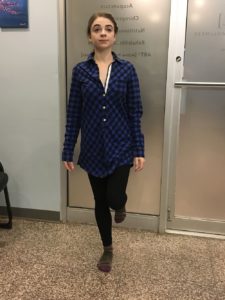
One Leg Stance – Stand on one leg without your other leg touching. Keep your eyes up off of the floor. If you need assistance, hold lightly onto a chair or door frame.
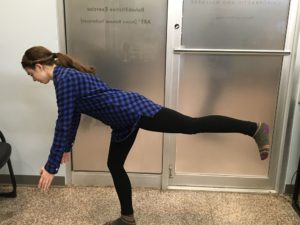
One Leg Airplane – Stand on one leg. Tip forward while keeping a good lumbar curve. Rotate from side to side, slowly keeping eyes forward not down.
Ankle sprains can vary from a small annoying injury to a serious problem with lifelong consequences. If you have experienced an acute ankle sprain or have a nagging problem from a sprain long ago, talk to us about how we can help. Our goal is to help you become healthier than you have ever been, from head to ankle!
‘Tis the Season for a good sale! Now through the end of December, we are running 15% off supplements, pillows, diffusers, essential oils, CBD products, and foam rollers. AM and PM blends are excluded.

Daryl C. Rich, D.C., C.S.C.S.

